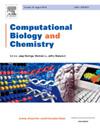2-(Diarylalkyl)aminobenzothiazole derivatives induce autophagy and apoptotic death through SIRT inhibition and P53 activation In MCF7 breast cancer cells
IF 2.6
4区 生物学
Q2 BIOLOGY
引用次数: 0
Abstract
Sirtuins (SIRTs) are multifunctional proteins that exhibit a wide range of substrate preferences and cellular localizations. They are reliant on NAD+ and are essential for the regulation of several cellular functions. The SIRT proteins play important role towards tumor survival and resistance mechanisms in tumor cells. Therefore, molecules targeting SIRT proteins gained significant recognition in cancer research. In this work, we explored the anticancer property, potential and mode of action of 2-(diarylalkyl)aminobenzothiazole derivatives on MCF7 human breast cancer cells. Our studies established that 2-(diarylalkyl)aminobenzothiazole derivatives 1-((6-chlorobenzo[d]thiazol-2-ylamino)(3,4-dichlorophenyl)methyl)naphthalen-2-ol (7ab) and 1-((6-chlorobenzo[d]thiazol-2-ylamino)(4-bromophenyl)methyl)naphthalen-2-ol (7ba) treatment in a dose dependent manner drastically lowered the cell proliferation in MCF7 cells and the IC50 values of 7ab and 7ba was found to be 11.4 µM and 9.6 µM at 24 hr in these cells. Docking and molecular dynamic simulation studies further revealed that 7ab and 7ba show significant binding with SIRT1 protein. Consistently, treatment with 7ab and 7ba reduced the expression levels of SIRT1 protein while increasing acetylation of p53, a known SIRT protein target in MCF-7 cells. We observed that SIRT1inhibition was associated with activation of p53, an essential protein for apoptotic cell death, in MCF-7 cell lines. Furthermore, 7ab and 7ba treatment induced LC3-II expression and vacuole formation in the cytoplasm leading to autophagic cell death. Our findings together reveal the plausible cellular targets and specificity of these new small molecules as SIRT inhibitors, which increase p53 acetylation and suppress the proliferation of MCF-7 human breast cancer cells by triggering autophagic and apoptotic cell death.
求助全文
约1分钟内获得全文
求助全文
来源期刊

Computational Biology and Chemistry
生物-计算机:跨学科应用
CiteScore
6.10
自引率
3.20%
发文量
142
审稿时长
24 days
期刊介绍:
Computational Biology and Chemistry publishes original research papers and review articles in all areas of computational life sciences. High quality research contributions with a major computational component in the areas of nucleic acid and protein sequence research, molecular evolution, molecular genetics (functional genomics and proteomics), theory and practice of either biology-specific or chemical-biology-specific modeling, and structural biology of nucleic acids and proteins are particularly welcome. Exceptionally high quality research work in bioinformatics, systems biology, ecology, computational pharmacology, metabolism, biomedical engineering, epidemiology, and statistical genetics will also be considered.
Given their inherent uncertainty, protein modeling and molecular docking studies should be thoroughly validated. In the absence of experimental results for validation, the use of molecular dynamics simulations along with detailed free energy calculations, for example, should be used as complementary techniques to support the major conclusions. Submissions of premature modeling exercises without additional biological insights will not be considered.
Review articles will generally be commissioned by the editors and should not be submitted to the journal without explicit invitation. However prospective authors are welcome to send a brief (one to three pages) synopsis, which will be evaluated by the editors.
 求助内容:
求助内容: 应助结果提醒方式:
应助结果提醒方式:


